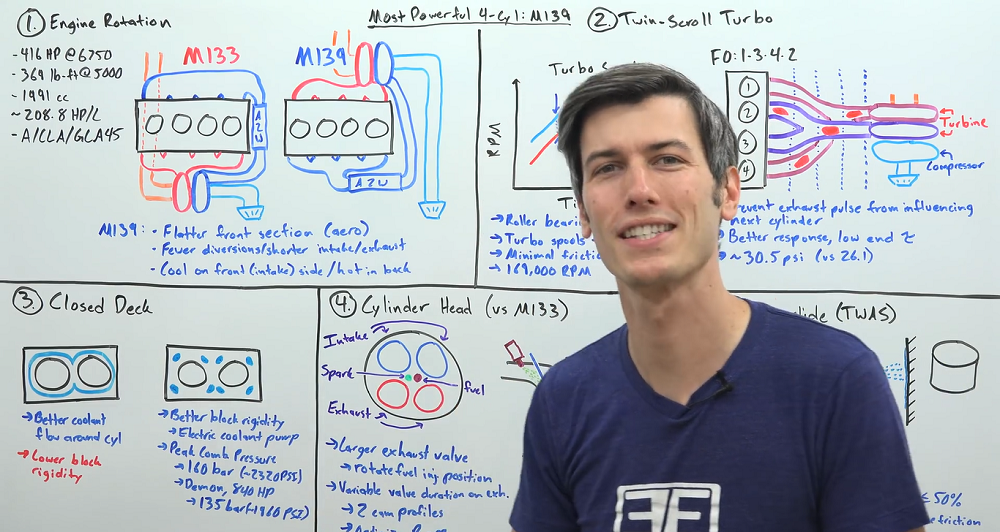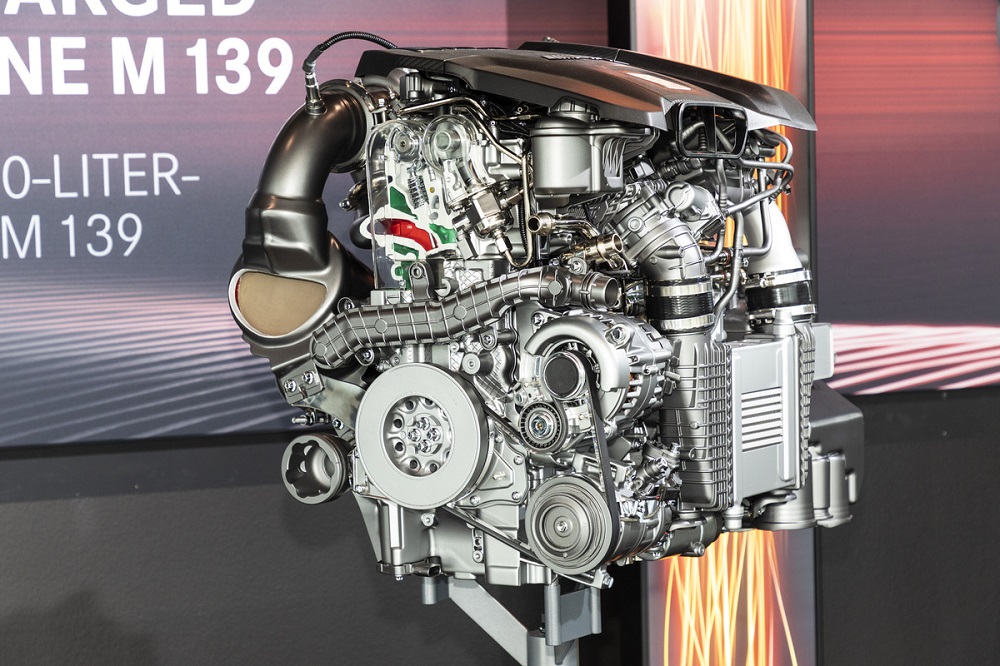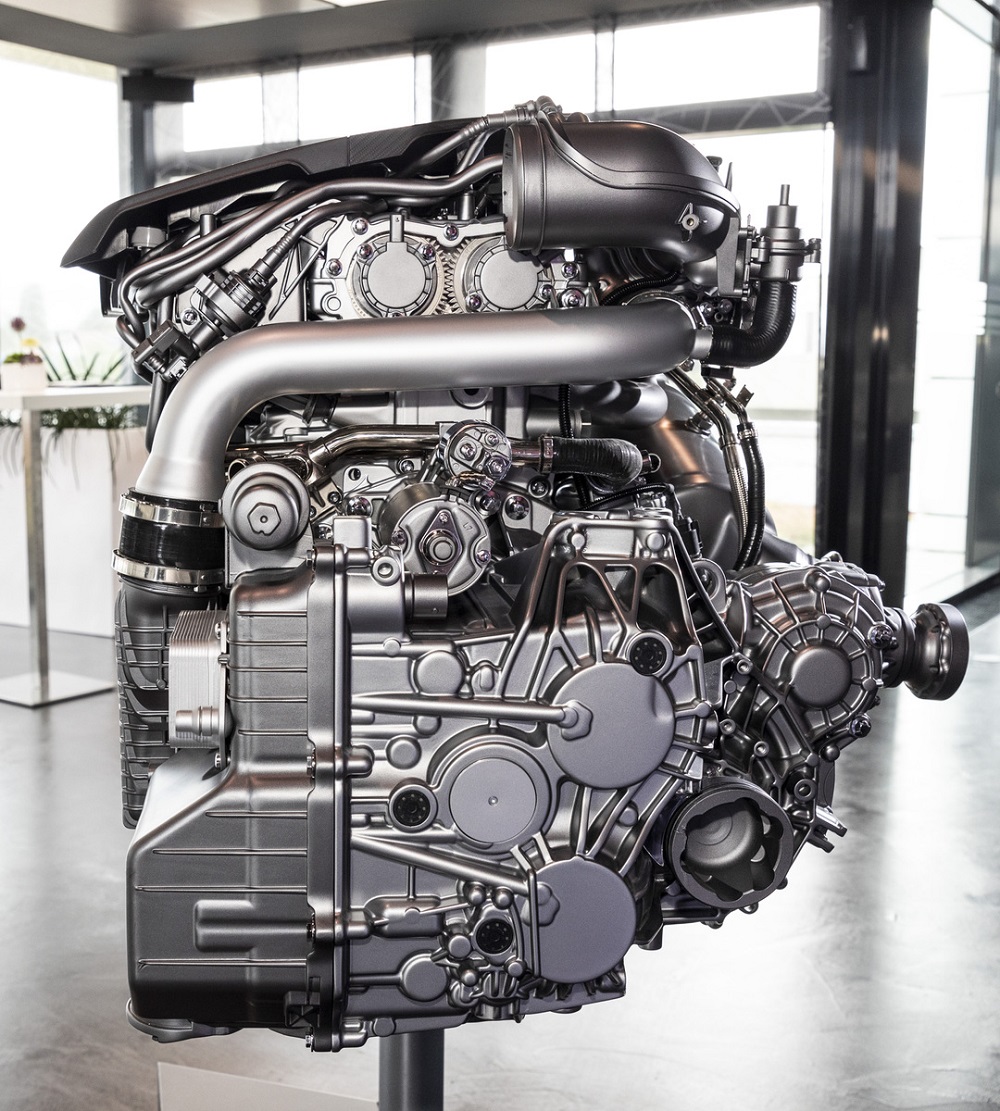How Mercedes-AMG Got 416 Horsepower Out of the M139 Engine
Mercedes-AMG had to do a lot more than crank up the boost to squeeze more than 200 horsepower per liter out of its M139 turbo four-banger.
As AMG has grown more popular over the years, it’s also become busier. It no longer just enhances V8- or V12-powered Mercedes vehicles. It covers the entire spectrum and increases the performance of four-, six-, eight-, and 12-cylinder coupes, cabriolets, sedans, crossovers, and SUVs. The power mongers at AMG extracted 375 horsepower and 350 lb-ft of torque from the M133 2.0-liter four-pot in vehicles such as the CLA 45.
They managed to top that with the new M139 turbocharged 2.0-liter I4, which cranks out a maximum of 416 horsepower and 369 lb-ft of torque (in S tune). If you do the math, you’ll see that translates to roughly 208 horsepower per liter. In the video above, Engineering Explained‘s Jason Fenske tells us all how they accomplished the feat. We’ve done our best to streamline his already simplified technical breakdown below:

1.) 180 Degrees of Spin: Mercedes-AMG took the basic layout of the M133 and rotated everything 180 degrees. For the M139, air enters the intake, which feeds it behind the engine to the inlet side of the turbo. That’s then routed up front through the air-to-water intercooler, through the intake and engine, back to the exhaust, and finally out the back of the car. According to Fenske, “Mercedes claims that by switching this around, they now have a shorter length and fewer diversions for both the intake and the exhaust.” Better breathing means better performance.
2.) The Three Bs: Bearings, Breathing, and Boost: The M139’s turbo uses roller bearings instead of journal bearings. Those new bearings create less friction and allow the turbo to spool more quickly and create better low-end torque.

The turbo‘s twin-scroll construction makes it more efficient at pulling exhaust gases out of the engine and pumping them through its turbine. Cylinders 1 and 4 breathe through one scroll and cylinders 2 and 3 breathe through the other one. Each cylinder’s exhaust pulse fires at a different time than the other cylinders fire theirs so exhaust gases are jettisoned out of the engine (instead of the pulses hitting each other and bouncing exhaust back into the engine). The M139 also generates more boost than its predecessor: 30.5 psi vs. the M133’s 26.1 psi.
3.) Deck Closed for Improvements: Open deck engine designs surround the cylinders with coolant circuits, but they do that at the expense of block rigidity. The M139 has a closed deck design that uses strategically placed holes to circulate coolant and help the engine withstand astronomically high cylinder pressures of approximately 2,320 psi – “over 300 psi higher than the 840-horsepower Dodge Demon engine,” according to Fenske.
4.) Port Star: By moving the fuel injectors, Mercedes-AMG engineers were able to install larger exhaust valves to improve the engine’s breathing. Variable cam profiles help even more.
A combination of port and direct fuel engine supplies the M139 with the amount of fuel it needs to produce its impressive amount of power.

5.) Do the Nanoslide: Instead of using solid cylinder liners, the M139 features spray-on liners applied by a twin-wire arc spraying process that Mercedes calls Nanoslide. Fenske says, “It’s very thin, it’s very wear resistant, and it has extremely low friction,” which makes the interaction between the pistons, piston rings, and cylinder walls much smoother. Tiny pores in the mirror-like surface of the liners help lubricate the engine with oil during operation.
*M139 photos courtesy of Mercedes-Benz.
